Berries come in all kinds of flavors and are packed with great benefits for our bodies. But there’s a catch — not every berry you see out in the wild is safe to eat. Some of them can make you very sick because they have poisons in them.
There are more than a hundred different wild berries in North America. But you need to know which ones are okay to pick and eat. This guide is here to help you.
We’ll talk about the edible wild berries that are safe and tasty to eat. We’ll also point out the ones you should stay away from because they’re poisonous. You’ll learn how to spot the differences so you can enjoy the good ones and avoid the bad ones.
- Related article: Wild Edible Plants
7 Key Takeaways on Edible and Poisonous Wild Berries
- Elderberries are full of nutrition, but you need to cook them first to get rid of some bad compounds. This makes them safe to eat and stops them from making you feel sick.
- Chokeberries, despite their name, are fine to eat raw. People are liking them more and more because they’re really good for you. They have a lot of antioxidants that help keep you healthy.
- Buffalo berries are a bit bitter, so they’re often cooked into sweet jams and syrups. You can eat them raw, though.
- Cloudberries, which grow in cold places, are a mix of sweet and sour. People usually eat them raw and enjoy their unique taste.
- Gooseberries come in different flavors, from sour to sweet. They’re great for eating raw, and they’re also used in tasty jams and pies. These berries are packed with vitamin C, antioxidants, and fiber, all good for your health.
- Hackberries are small, sweet, and have a crunch. You can eat them raw or turn them into a paste for different foods.
- Mulberries look like wild blackberries and taste sweet and juicy. You can eat them raw or use them in pies and teas for a delicious treat.
10 Edible Wild Berries That Are Safe to Eat
Exploring the world of edible wild berries can be a delightful adventure. Let’s dive into the common berries that are not only safe to eat but also delicious and nutritious. Who knows, you might discover a new favorite berry along the way!
1. Elderberry (Sambucus canadensis)
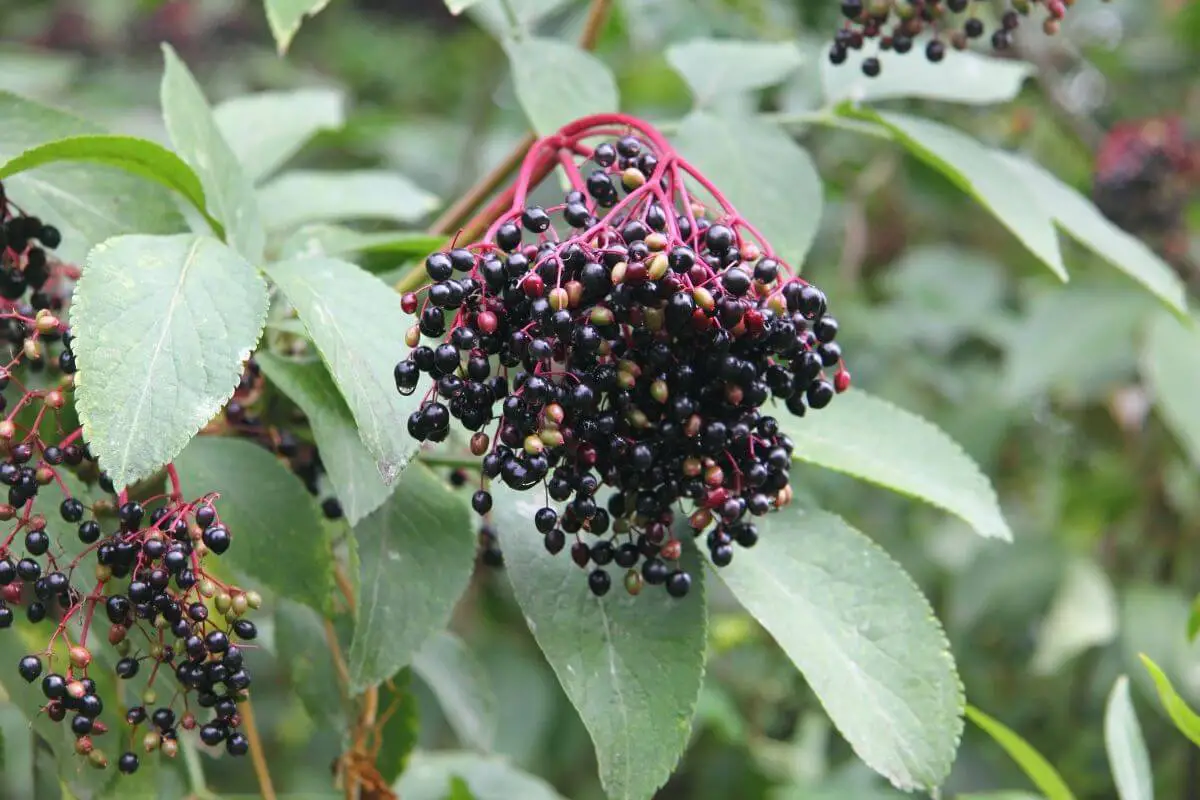
Elderberries are found in the woodlands and hedgerows of eastern North America. They offer a unique mix of flavors and health benefits. These small, dark fruits, often grouped, are a culinary and nutritional treasure.
When it comes to eating elderberries, it’s best to cook them first. This process transforms their tart and tangy taste into something delightful. This is whether for jams, juices, or wines.
Raw elderberries contain compounds that can upset your stomach. But cooking deactivates these, making the berries safe and delicious.
The health perks of elderberries are impressive. Packed with vitamin C and B6, they are a great support for your immune system. Elderberries are also rich in antioxidants like flavonols and anthocyanins. This helps fight off harmful molecules in your body.
2. Chokeberries (Aronia species)
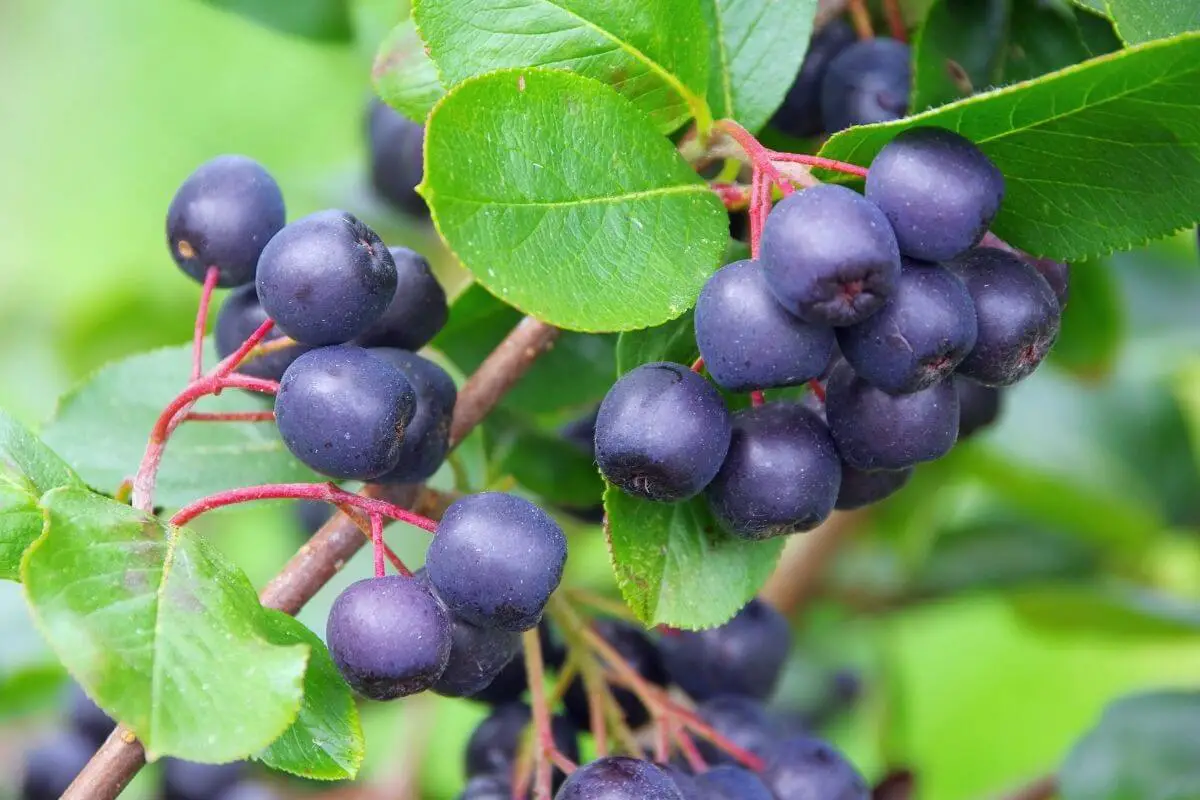
Chokeberries come in two main types: black and red. People love the black chokeberry (Aronia melanocarpa) for its rich flavor. The red chokeberry (Aronia arbutifolia) is less sweet and a bit dry. But don’t worry, both are fine to eat just as they are.
When you bite into a chokeberry, get ready for a burst of tartness. That’s why most folks use them to make things like jam, juice, tea, and wine. These berries are versatile and full of flavor.
People are calling chokeberries a “superfood” because they’re packed with antioxidants. These nutrients are great for your health. You’ll find chokeberries in health food stores and growing wild. They thrive in the damp areas of the eastern United States and Canada.
So, whether you pick them yourself or grab them from the store, chokeberries can add a healthy punch to your diet.
3. Buffalo Berries (Shepherdia species)
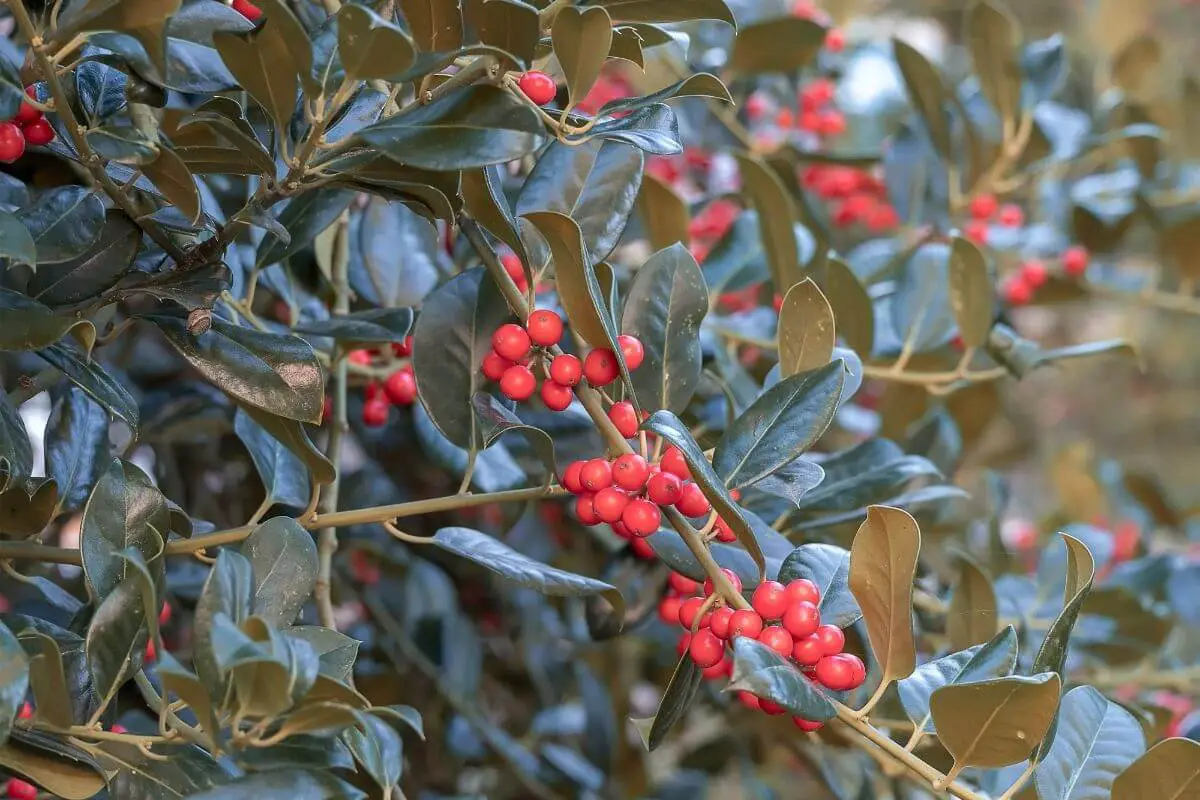
Buffalo berries are wild fruits that stand out with their dark red color and small white dots. These berries come from three very similar species. Their main difference is their location. The most common species is the silver buffaloberry (Shepherdia argentea). It grows well in the western United States.
When it comes to eating buffalo berries, you can munch on them raw. But be prepared for a rough, bitter experience due to their skin. The real treat, though, is turning them into jams and syrups. This way, you get to enjoy their rich flavor. You can also benefit from the powerful antioxidant they offer: lycopene.
Just remember, like with many good things, moderation is key. Eating too many buffalo berries can lead to an unplanned cleanse, namely, diarrhea.
4. Cloudberries (Rubus chamaemorus)
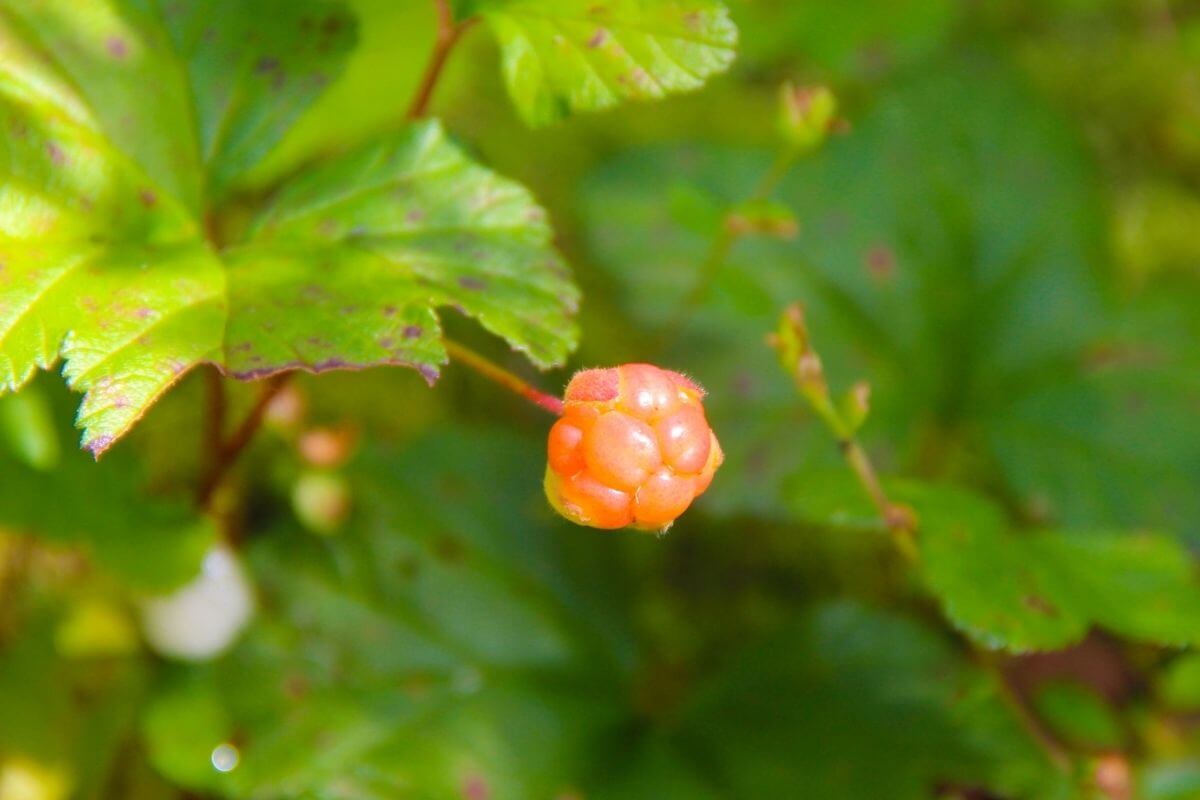
Finding cloudberries is a challenge as they only grow in cold, high places. In North America, you’ll spot them in Maine and Canada. These berries might look like raspberries, but they’re their own thing. They start red but turn a pale amber-orange when they’re ready to pick.
Cloudberries are soft and full of juice, with a mix of sweet and tart flavors. They’re not just tasty, they’re also packed with vitamin C and ellagitannins. These nutrients are strong antioxidants. They help your body fight off harmful substances that can make you sick.
5. Gooseberries (Ribes uva-crispa)
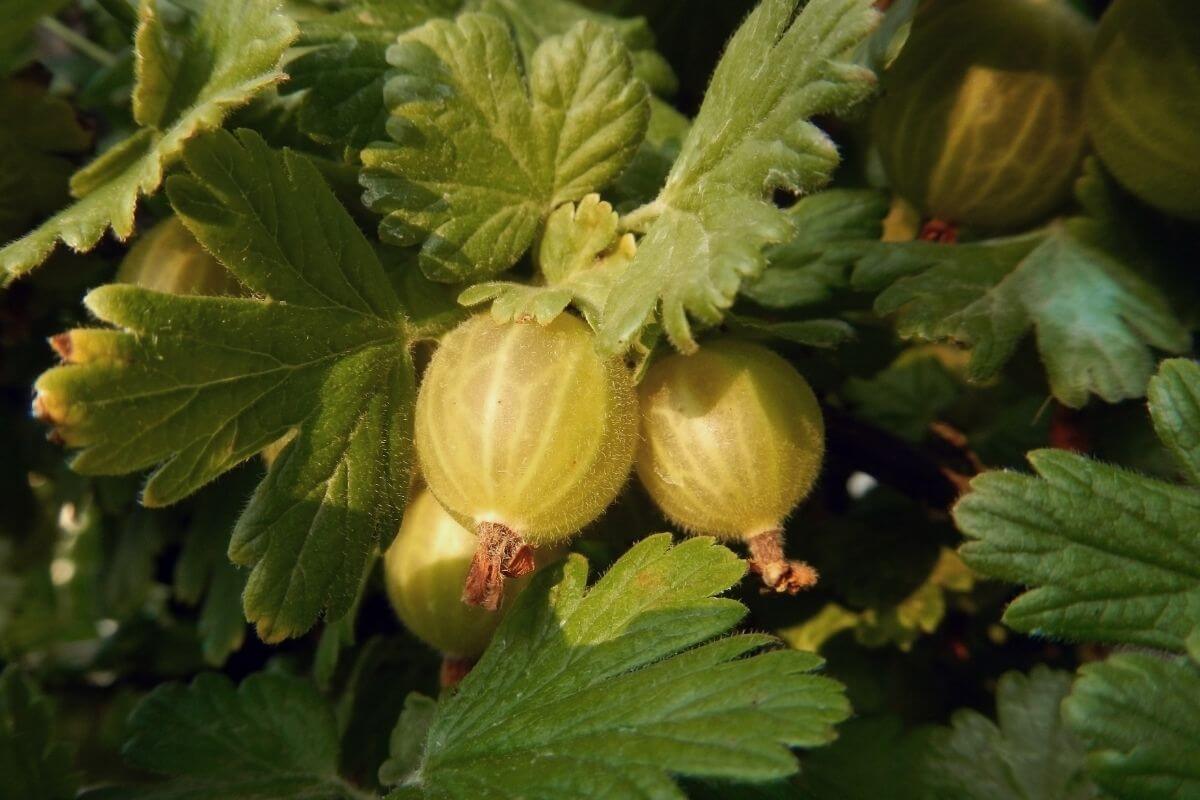
Gooseberries are unique berries, coming in green, red, or purple colors. They also sport a round shape with tiny spikes. Despite their prickly appearance, these berries are a culinary delight. They thrive in damp, shaded areas and are commonly found across North America.
Eating gooseberries is a treat whether you enjoy them fresh, in jams and syrups, or as pie filling. Their taste can range from sour to sweet. What’s more, they are a powerhouse of nutrients. They are packed with vitamin C and antioxidants. They are also a great source of dietary fiber. It is perfect for promoting healthy digestion.
6. Hackberries (Celtis occidentalis)
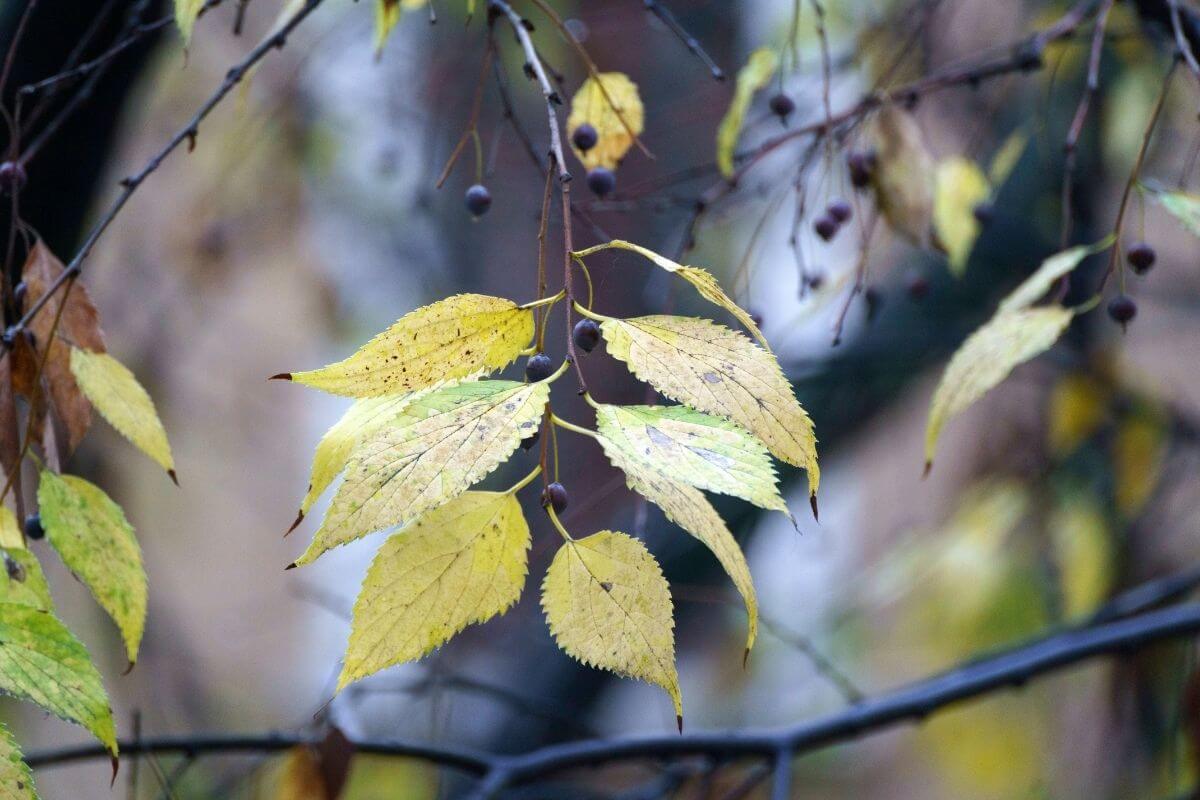
Hackberry trees grow all over North America, from sunny spots to shady areas. The small, purple berries they produce are super sweet and crispy. You can eat them right off the tree, but sometimes they’re so hard you need to crush them into a paste.
Inside the hackberry is a nut that’s packed with nutrients. It’s full of protein, carbs, and fat, almost like a mix between a berry and a nut. This nut also gives you lots of vitamins.
7. Mulberries (Morus species)
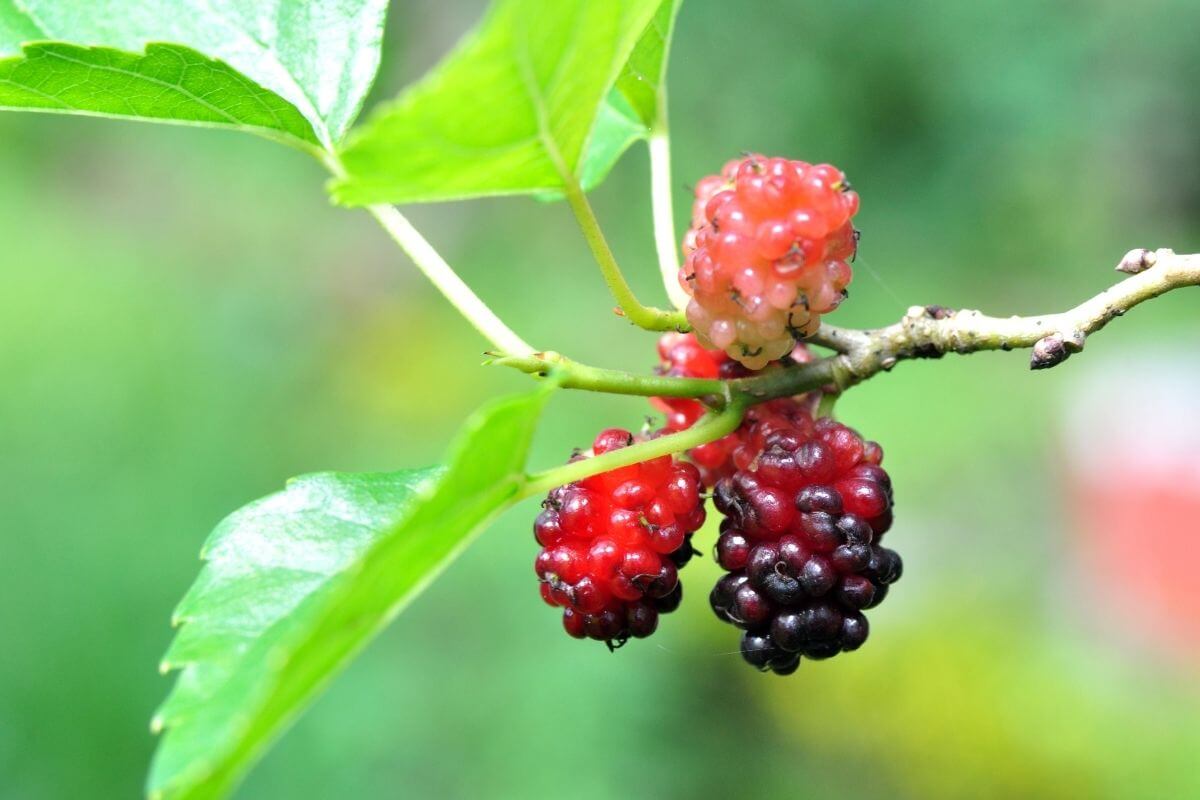
Mulberries come in different colors, like black, red, and white. They might also look a bit like blackberries. But here’s the big difference: mulberries grow on trees, not bushes. You’ll find mulberry trees in lots of places with mild and warm climates.
These trees give us what’s called an aggregate berry. That means the berries come in groups. Mulberries are juicy and sweet. You can eat them fresh or use them to make tasty treats like pies and teas. The dark purple mulberries are the sweetest, but be careful, they can leave a mark on your hands and clothes.
Eating mulberries is a great way to get lots of vitamins, particularly C and B. They also have magnesium, potassium, iron, and antioxidants.
8. Rose Hips (Rosa species)
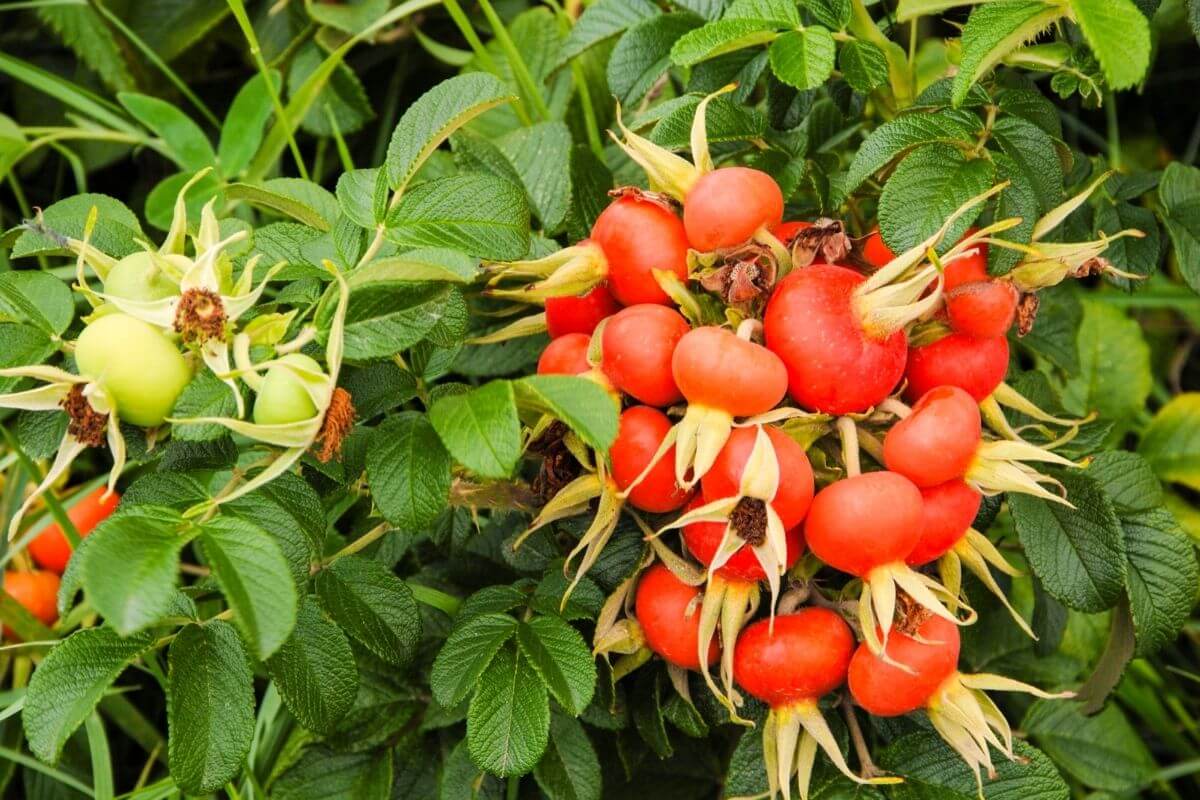
Many wild roses found in North America give us rose hips, which are fruits full of goodness. The bushes grow in spots with some shade.
All types of rose hips have flowers and fruits we can eat, with some being more delicious than others. The ones people grow can also be eaten. But they’re often treated with chemicals, so it’s safer to stick to the wild ones.
Rose hips are usually red and can taste very sweet, like apples, or a bit less sweet, depending on the kind of rose. You can eat them fresh, remove the seeds, or cook them into jam. They’re also great for adding natural sweetness to herbal teas.
Even though they have tiny seeds with irritating hairs, rose hips are packed with a mix of great nutrients. They’re super high in vitamin C, full of beta-carotene, and contain malic acid.
So, next time you spot some wild rose bushes, remember the tasty and healthy treats their fruits offer.
- Learn more about Edible Berry Bushes
9. Saskatoon Berries (Amelanchier species)
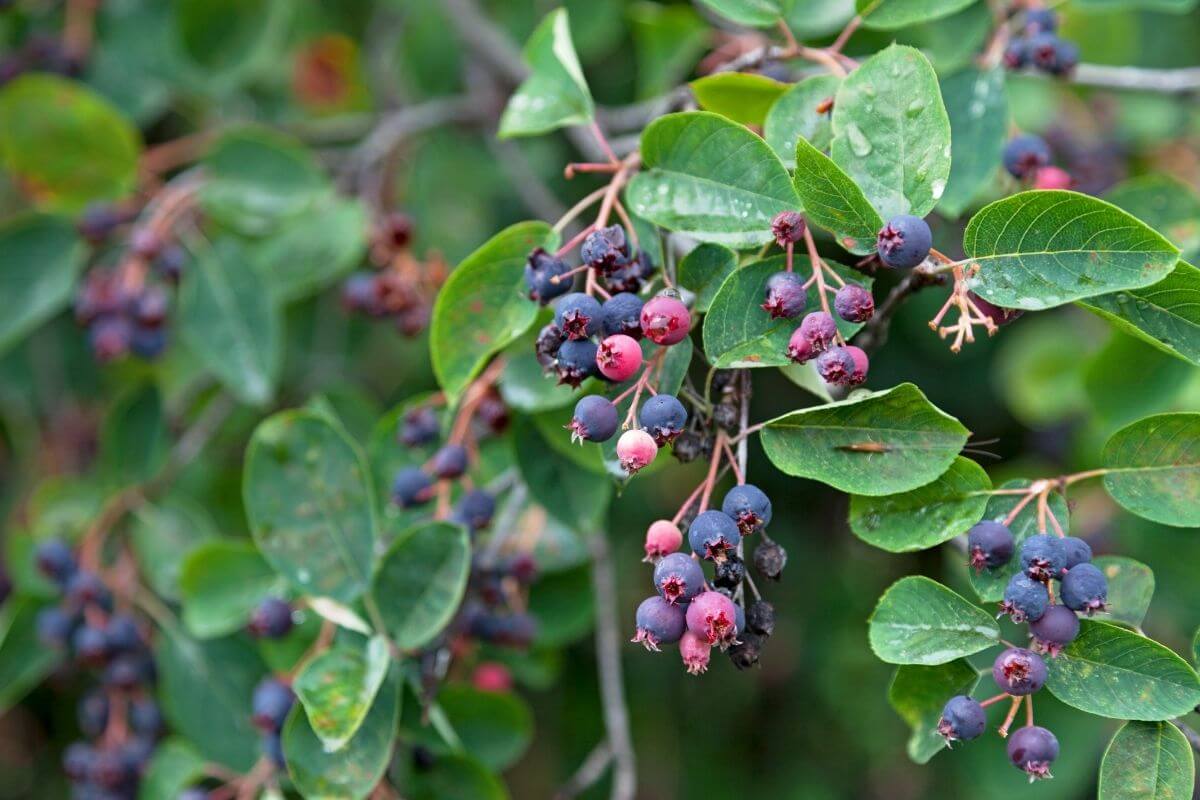
Saskatoons are tiny blueberries that grow on shrubs or trees. They turn into purple or deep blue berries when ripe. However, birds often eat them before they have completely ripened. So it might be a good idea to pick them when still pink to have some.
Saskatoon berries can be eaten raw or used for jams and pies. They are also an ingredient for beer, wine, and cider. Their flavor is exceptional, tastier than blueberries.
This edible fruit is an excellent source of vitamin B2, one of the best. Vitamin B2 is involved in energy production and is essential for good health.
10. Salmonberries (Rubus spectabilis)
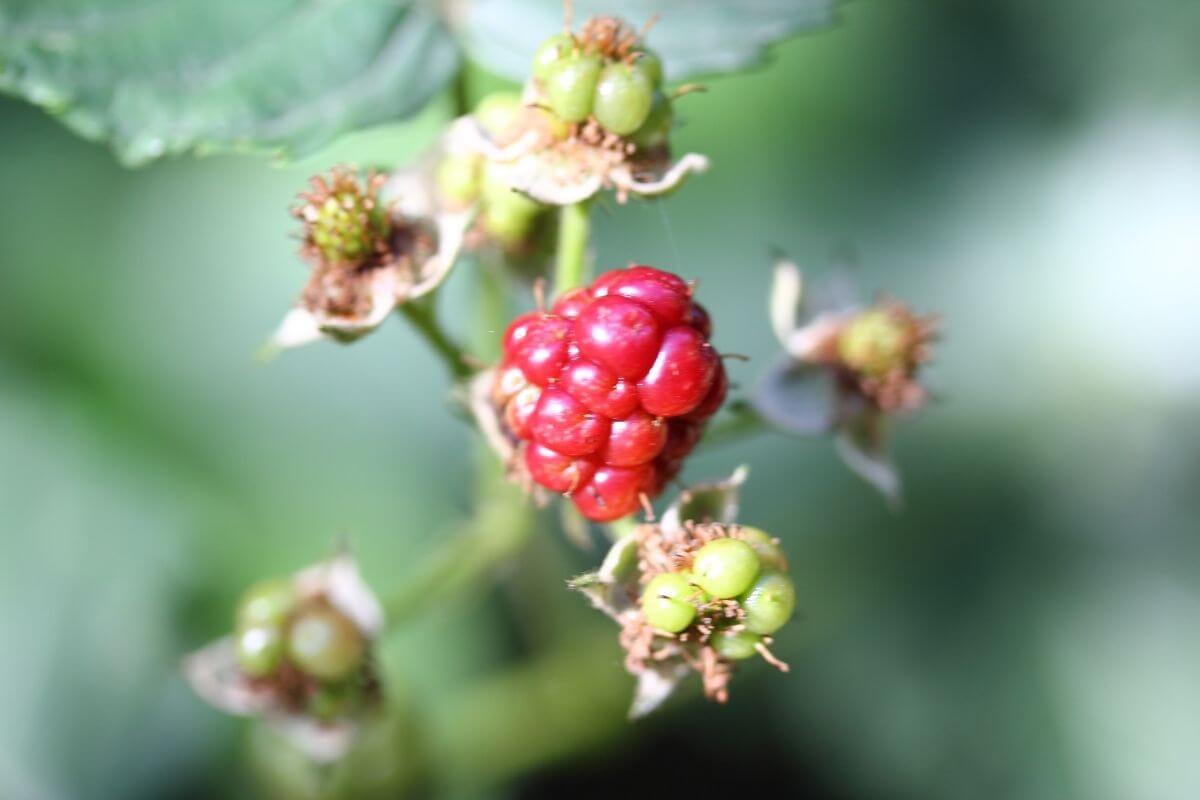
Salmonberries are another fruit that resembles raspberries. Their name derives from the fact that they look like clusters of salmon eggs. This is partly because they are bright red or orange.
Salmonberries have a unique taste. They are tart and contain big, bitter seeds. While you can eat them raw, they shine in jams or candies. Combining them with other fruits and sweetening with sugar improves their flavor. They can also be used as a base for alcoholic drinks.
Salmonberries provide good amounts of vitamins K and C and are also rich in manganese. These shrubs populate the western part of North America. They are especially common in coastal forests. They can also be found in moist forests and along rivers.
10 Poisonous Wild Berries to Avoid
Not all wild berries are safe to eat. Some contain toxic chemicals. These may cause unpleasant or fatal side effects, so they should not be consumed.
The “berry rule” is a helpful guideline for assessing berry toxicity. According to this rule, only 10% of white and yellow berries are safe to eat. 50% of red berries are safe. 90% of blue, purple, or black berries are safe. 99% of aggregated berries, like blackberries and raspberries, are safe to eat.
Let’s discuss 10 poisonous wild berries to avoid eating.
1. Mistletoe (Phoradendron serotinum)
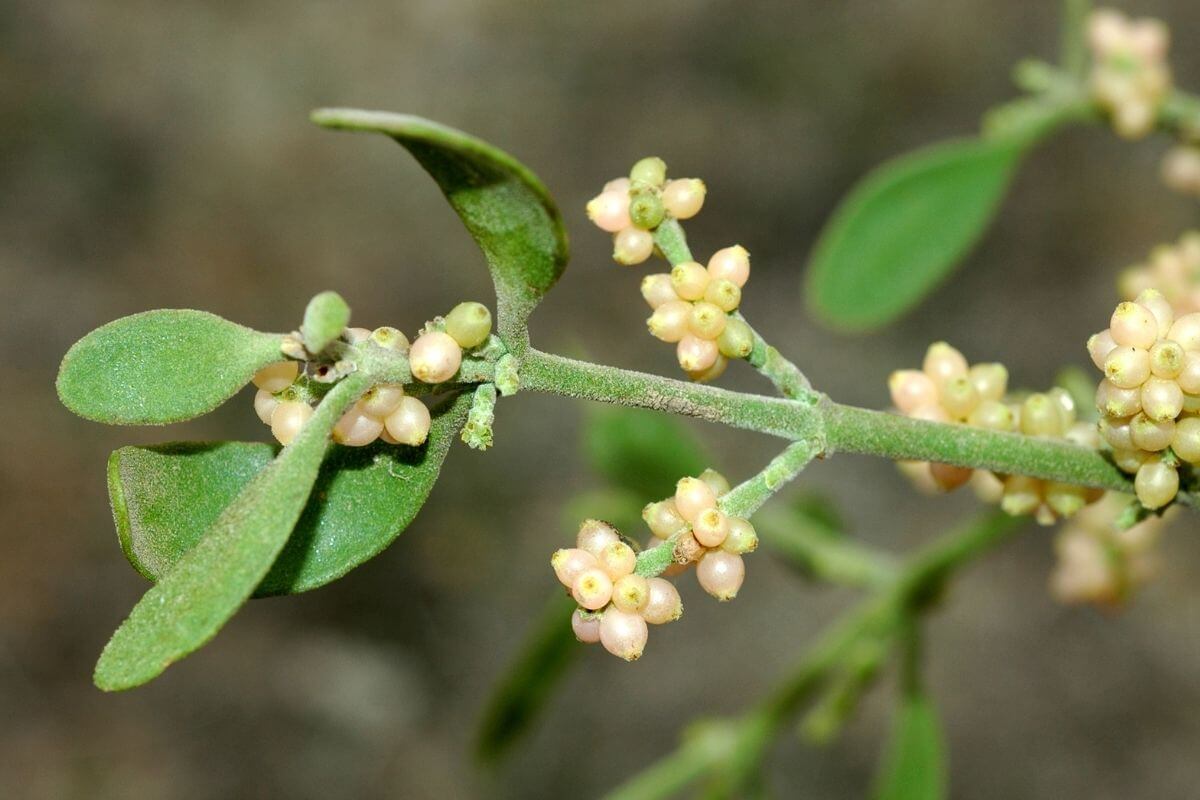
Often used as a Christmas decoration, all of the mistletoe plant’s parts are poisonous. The mistletoe berries are pink or white and grow in clusters. If eaten, they can cause stomach cramps and diarrhea. They also cause blurred vision and bradycardia (reduced heart rate).
2. Holly Berries (Ilex species)
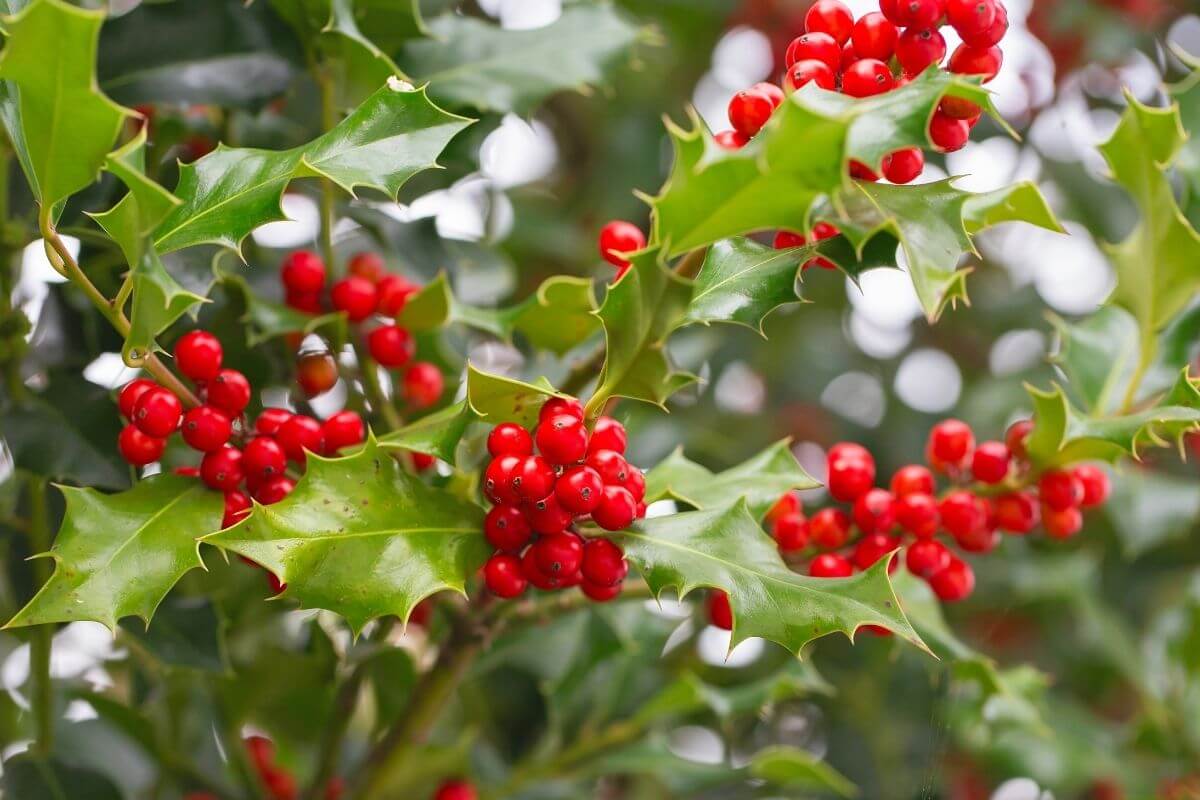
Holly berries are mildly poisonous. Holly berries can cause nausea and low blood pressure. But, the effects differ by a person’s age and health. They can be easily recognized because they grow very close to the stems.
3. Bittersweet (Celastrus scandens)
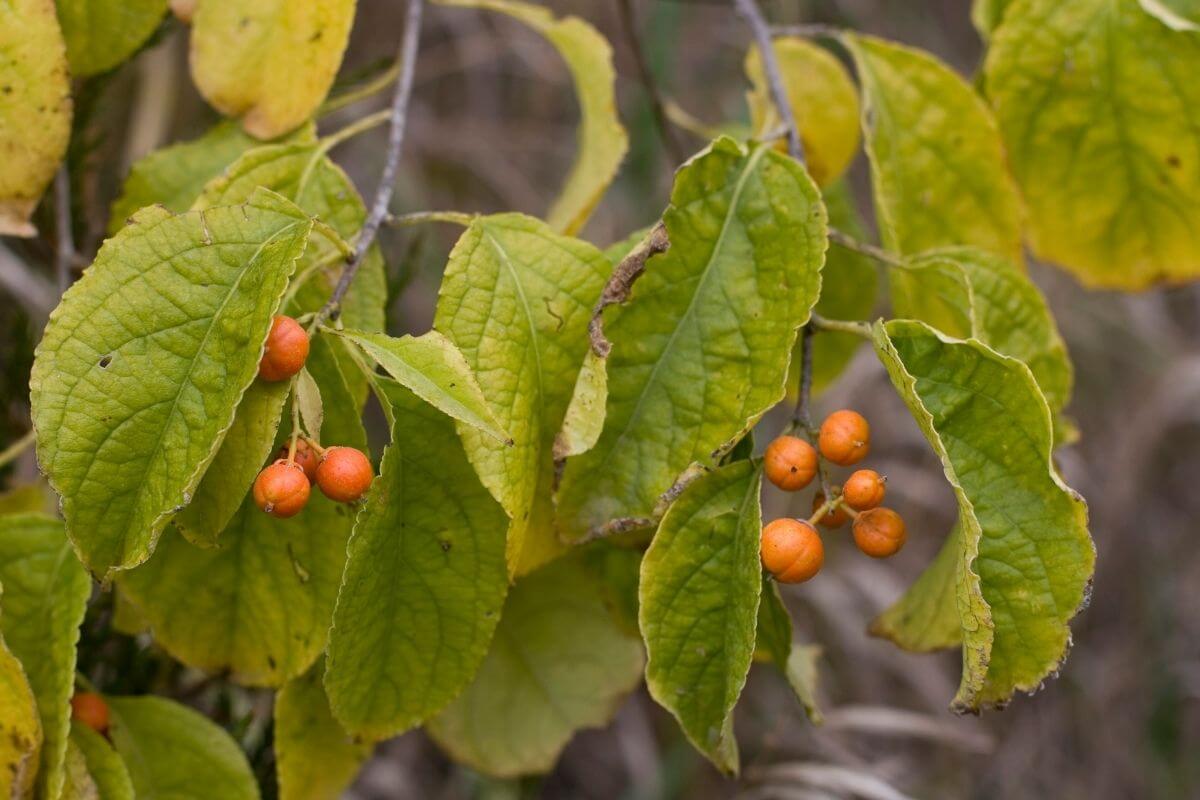
The bittersweet plant is a beautiful perennial vine. It bears bright orange berries surrounded by a pod. These toxic berries contain solanine, which can cause nausea and diarrhea if eaten.
4. Jerusalem Cherries (Solanum species)
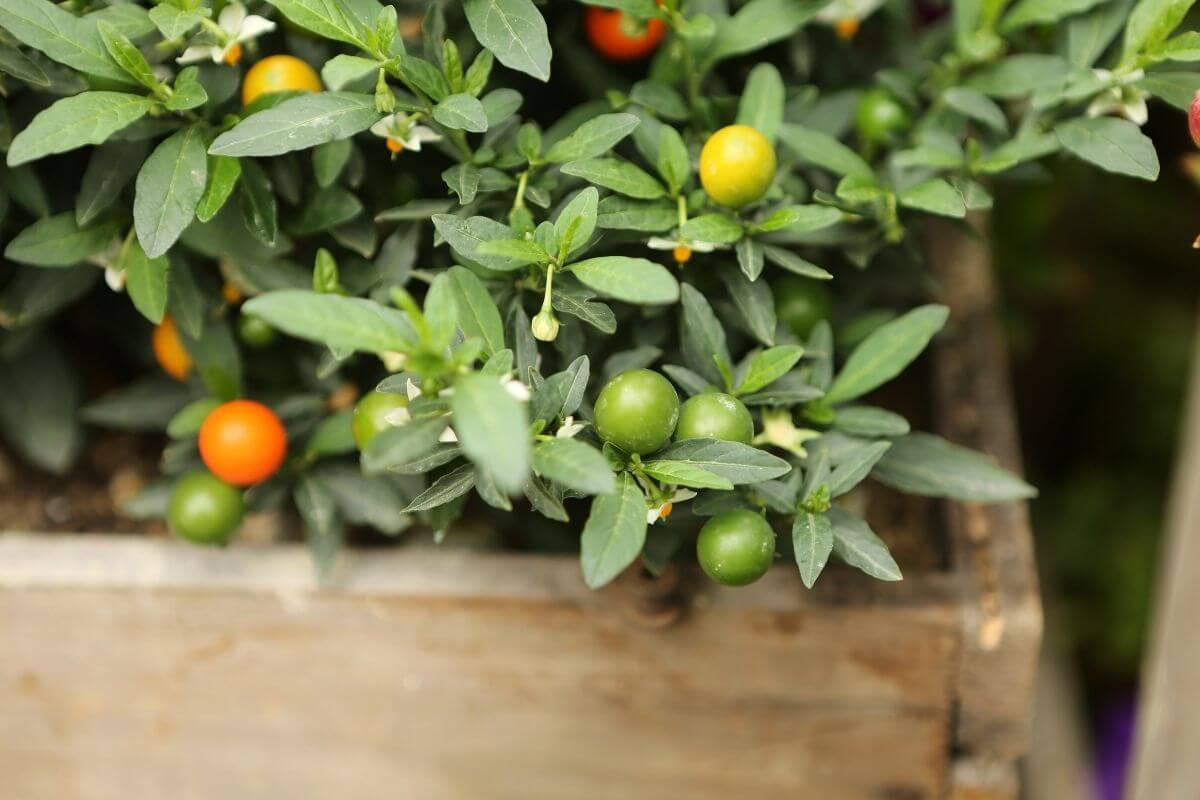
As their Latin name indicates, Jerusalem cherry berries contain solanocapsine. It can cause nausea, stomach infections, and cramping.
Pay close attention to avoiding unripe fruits. They are the most toxic. They can cause fever and tachycardia (increased heart rate), among other symptoms. These berries are yellow-orange in color and look like cherry tomatoes.
5. Pokeweed Berries (Phytolacca decandra)
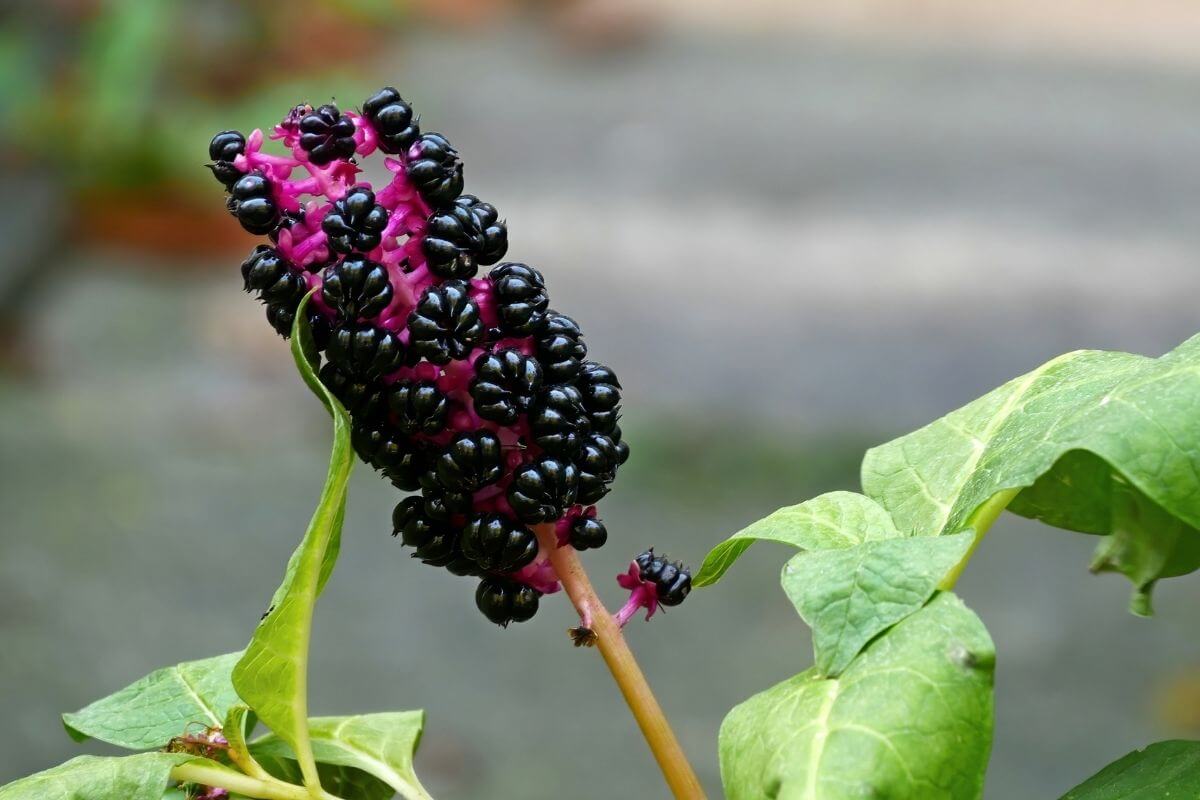
The pokeweed berries are initially green and turn dark purple as they ripen. They are sometimes mistaken for grapes but are much smaller and grow on red stems rather than woody ones.
Pokeweed’s berries, leaves, stems, and flowers contain a toxin, phytolaccatoxin. It is harmful to humans and mammals. Eating its berries leads to pain, nausea, diarrhea, and vomiting. It can also cause severe gastrointestinal issues.
The greens need to be picked and processed to deactivate the toxic compounds. But, it’s a long and risky process if not done right.
6. Ivy Berries (Hedera helix)
Common ivy berries contain saponin. It causes nausea and vomiting. They also contain oxalates, which cause swelling of the lips, tongue, and face. Ivy berries can be purple or orange-yellow in color. They are very bitter, so it’s not often that people eat enough of them to do real harm.
Other kinds of ivy look similar. They are also toxic. For example, Boston ivy (Parthenocissus tricuspidate) and poison ivy (Toxicodendron radicans). You can spot poison ivy by its small, yellow-green flowers. It also has deep reddish-brown leaves that turn green in the summer.
Not all ivy plants are dangerous, but it’s best to avoid them all when in doubt.
7. Yew Berries (Taxus species)
Yew trees are conifers with bright red berries that can grow all winter. The yew berries have very toxic seeds. They can cause symptoms. These include coldness, tremors, and trouble breathing. They also include an abnormal heart rate.
Excessive yew consumption can lead to a condition called ‘complete heart block.’ This can result in a heart attack and death. The leaves of this tree are also poisonous and should be avoided.
8. Virginia Creeper Berries (Parthenocissus quinquefolia)
Virginia creeper is similar to poison ivy, but its leaves have five leaflets. It produces green flowers arranged in clusters. These flowers mature into bluish-black fruits which contain dangerous amounts of calcium oxalate. This compound, also known as oxalic acid, is toxic to the kidneys and can cause death.
9. European Spindle (Euonymus europaeus)
The European spindle shrub is easily identifiable. Its pink fruit capsules contain orange berries. The berries look beautiful. But, they have many toxic substances, like glycosides, evobioside, evomonoside, and evonoside.
Thirty berries of European spindle are enough to kill an adult. A lower dose can cause nausea, vomiting, diarrhea, dizziness, and stomach pain.
10. Lily of the Valley (Convallaria majalis)
The Lily of the Valley plant has bright red berries near the ground. These berries are toxic. Eating them can cause cardiac arrest. Small amounts cause confusion, fatigue, vomiting, and abdominal pain. They also lower the heart rate.
The berries are the most dangerous. But the whole plant is poisonous. It is similar to other non-dangerous plants, especially some Maianthemum species.
Edible and Poisonous Wild Berries Final Thoughts
Several wild berries are delicious, nutritious, and full of vitamins and minerals. They are also very easy to find. But there are some wild berries that you shouldn’t eat because they can be harmful and carry deadly toxins!
If you want to try eating wild edible berries, know what type of berry you pick. Remember that red and orange berries are more likely to be harmful than dark-skinned berries. Some berries are also edible only after being cooked, while others are safe to eat raw.
For more on wild fruits and plants that can be eaten, check out these articles:

